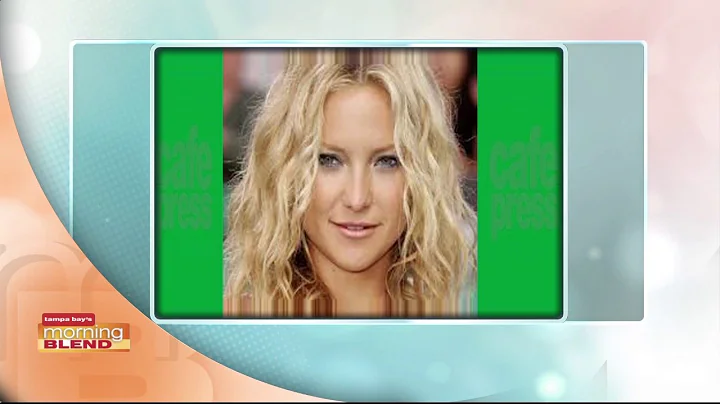Choosing Additional Materials: A Guide for English Advanced Students
Table of Contents
-
Introduction
-
Why Choose an Additional Material?
-
Tips for Choosing Additional Material for Conflicting Perspectives
- Include both perspectives in one text
- Avoid picking texts with similar content
- Cover events, personalities, and situations
-
Tips for Choosing Additional Material for History and Memory
- Base the text on real persons, events, or situations
- Include a mixture of facts and personal memory resources
- Use special text type techniques to represent memory
-
General Rules for Choosing Additional Material
- Differentiate the text type from the set text and other additional materials
- Include one classic and one contemporary text for contrast
- Choose complicated texts over simple ones
-
Text Types to Avoid Choosing
- Avoid simple texts like lyrics, cartoons, and advertisements
- Stay away from editorials and feature articles
- Don't pick dry nonfiction; opt for creative nonfiction instead
- Shakespeare may be too complicated for this purpose
- Avoid pop culture, teen, or children's books and films
📚 Additional Material for English Advanced: Making the Right Choice
Imagine you've been tasked with selecting an additional material for your English Advanced class. You may feel overwhelmed by the plethora of options available. However, with a clear understanding of why additional materials are required and some tips to guide your decision, you can make an informed choice that will impress your teachers and enhance your understanding of representation and text.
Introduction
Before diving into the art of choosing additional materials, it's essential to comprehend the purpose behind this requirement. The Board of Studies mandates the inclusion of an extra material to showcase your extensive reading and demonstrate your ability to analyze diverse perspectives in the context of representation in different mediums. These additional materials not only reflect your wide reading but also give you the opportunity to make statements about representation and text across various text types.
Why Choose an Additional Material?
✅ Reflecting Your Wide Reading: Selecting an additional material allows you to showcase your engagement with literary works beyond the assigned texts. While the expectation of reading ten texts may not always be feasible, aim to choose at least two additional materials that demonstrate your thoughtful consideration of the topic of representation in text.
✅ Providing Variety: Additional materials play a crucial role in providing variety within your study of representation and text. Since you have the freedom to choose, the selection becomes a significant criterion on which you are evaluated. Therefore, choose prudently to ensure your choice impresses your teachers and stands out from the rest.
✅ Exploring Different Mediums: While representation on the page is vital, it is equally important to delve into how representation works through audio and visual mediums. Your additional materials should encompass a range of mediums to exhibit your understanding of representation across various text types.
Tips for Choosing Additional Material for Conflicting Perspectives
To ensure your additional material for the study of conflicting perspectives aligns with the requirements, consider the following guidelines:
Include both perspectives in one text
Choosing an additional material that presents both conflicting perspectives within the same text is crucial. Avoid selecting two separate texts that merely advocate for opposing viewpoints. The goal is to find a text that engages skillful representation of multiple perspectives, allowing you to analyze the dynamic interplay between them.
Avoid picking texts with similar content
To offer a diverse range of perspectives, steer clear of additional materials that cover topics similar to your set text. For example, if your set text explores the Holocaust, don't choose additional materials that solely focus on Jewish persecution or related themes. Instead, opt for texts that cover a variety of events, personalities, and situations to present a more comprehensive understanding of the theme of conflicting perspectives.
Cover events, personalities, and situations
When selecting additional materials, aim to cover a wide range of subjects. Ensure you have one text that delves into a significant event, another that explores the viewpoint of a renowned personality, and a third that explores a compelling situation. A situation refers to a long-held grudge, an intense argument, or a cultural clash, representing multiple perspectives and their implications. By incorporating these elements, you develop a well-rounded understanding of conflicting perspectives and their impact within different contexts.
Tips for Choosing Additional Material for History and Memory
When choosing additional material for the study of history and memory, focus on the following considerations:
Base the text on real persons, events, or situations
To facilitate meaningful discussions around history and memory, your additional materials should be grounded in some form of truth. However, it's important to note that the level of factual content can vary. While some texts may take minor creative liberties, others may heavily fictionalize events or people. A balance between facts and imaginative elements can lead to stimulating discussions and interpretations.
Include a mixture of facts and personal memory resources
Strive to select texts that incorporate both factual information and personal memory resources. These resources can range from personal accounts and narratives to photographs, song lyrics, or cultural artifacts that symbolize specific periods or events. By blending facts and personal memory, you create a rich tapestry that invites exploration and analysis.
Use special text type techniques to represent memory
When choosing additional material, pay attention to how the text employs special text type techniques to represent memory. Look for elements such as flashbacks, visual representations, song lyrics, or even video clips that help convey the multi-dimensionality of memory. By utilizing these techniques, texts can evoke vivid and emotive connections to the past, allowing for a deeper understanding of how memory is constructed and represented.
General Rules for Choosing Additional Material
In addition to the specific considerations for conflicting perspectives and history and memory, there are some general rules to keep in mind:
Differentiate the text type from the set text and other additional materials
To ensure a balanced selection, choose an additional material that differs in text type from your set text and other additional materials. If your set text is a novel, opt for poetry or a play as your additional material. The goal is to provide a contrasting perspective and enhance your comprehension of representation and text in various literary forms.
Include one classic and one contemporary text for contrast
To showcase a breadth of knowledge and demonstrate your ability to engage with diverse literary works, aim to include both a classic and a contemporary text in your selection. A classic refers to a well-regarded literary work that has stood the test of time, typically considered literature. A contemporary text, on the other hand, is a more recent publication, preferably one that has garnered critical acclaim or received awards. By including both classics and contemporary texts, you display your capacity to analyze different literary styles and contexts.
Choose complicated texts over simple ones
While simple texts may seem appealing due to their brevity or ease of understanding, they often lack the depth and complexity required for in-depth analysis. Instead, opt for texts that delve into intricate themes, perspectives, or narratives. Complicated texts provide a wealth of material for exploration, enabling you to showcase your analytical skills and deliver a nuanced understanding of the topic at hand.
Text Types to Avoid Choosing
To ensure your additional materials resonate with the expectations of your English Advanced class, it is advisable to avoid certain text types. These include:
✘ Simple texts such as lyrics, cartoons, and advertisements, which often lack the depth required for analysis and exploration.
✘ Editorials and feature articles, as they tend to be created quickly and may not offer the nuanced content necessary for in-depth study.
✘ Dry nonfiction, which typically focuses solely on presenting factual information without engaging with creative storytelling techniques or personal perspectives.
✘ Works by Shakespeare or other complex playwrights, as they may be challenging to interpret within the context of representation and text.
✘ Pop culture, teen, or children's books and films, as they tend to lack the depth and sophistication required for advanced analysis and discussion.
By avoiding these text types, you enhance your chances of selecting additional materials that resonate with the complexity and rigor expected in your advanced English studies.
In conclusion, selecting suitable additional material for your English Advanced class involves a thoughtful consideration of various factors. Understanding the purpose of these materials, following guidelines specific to conflicting perspectives and history and memory, and adhering to general rules of selection will ensure your choices impress your teachers and lead to enriched discussions and analyses.







